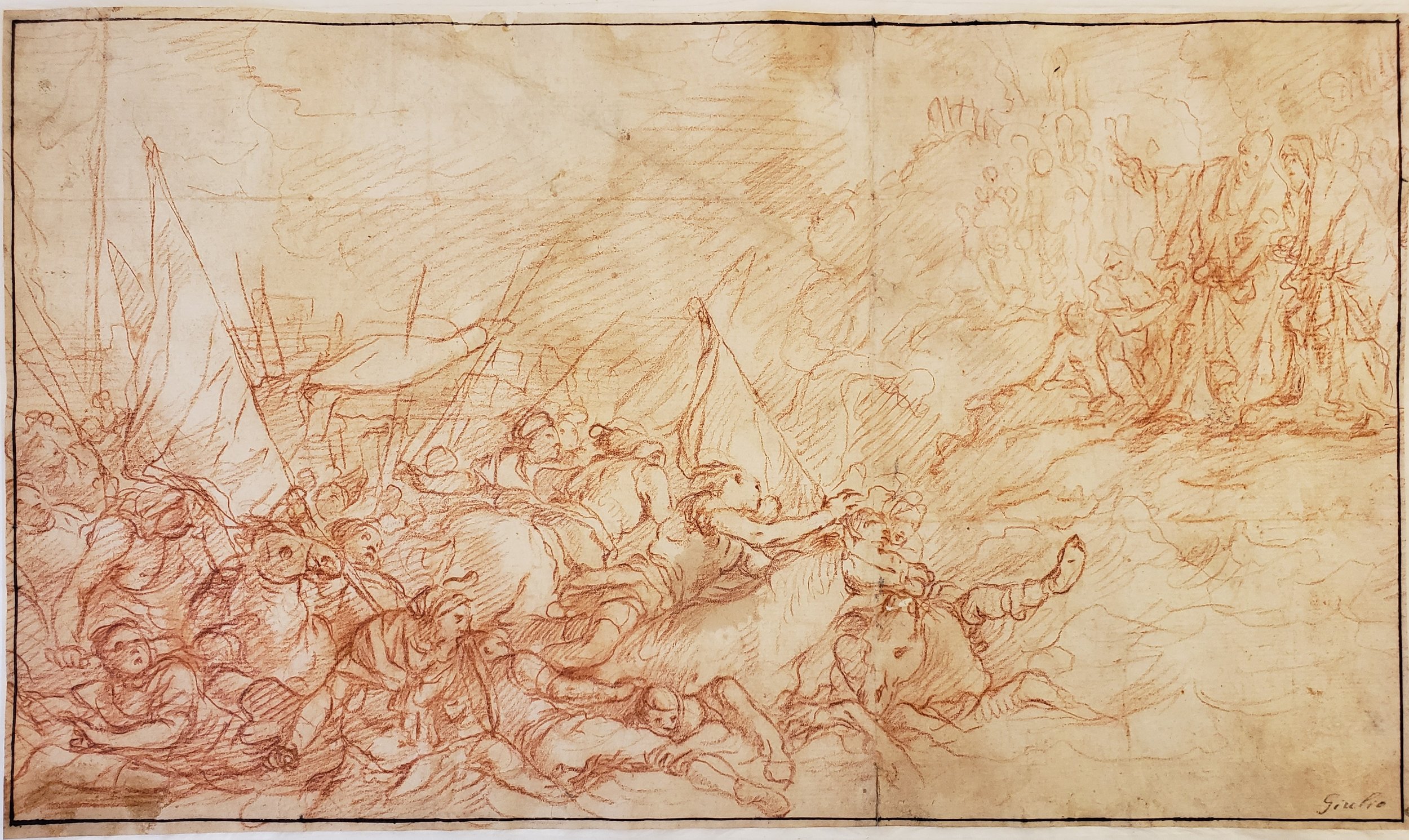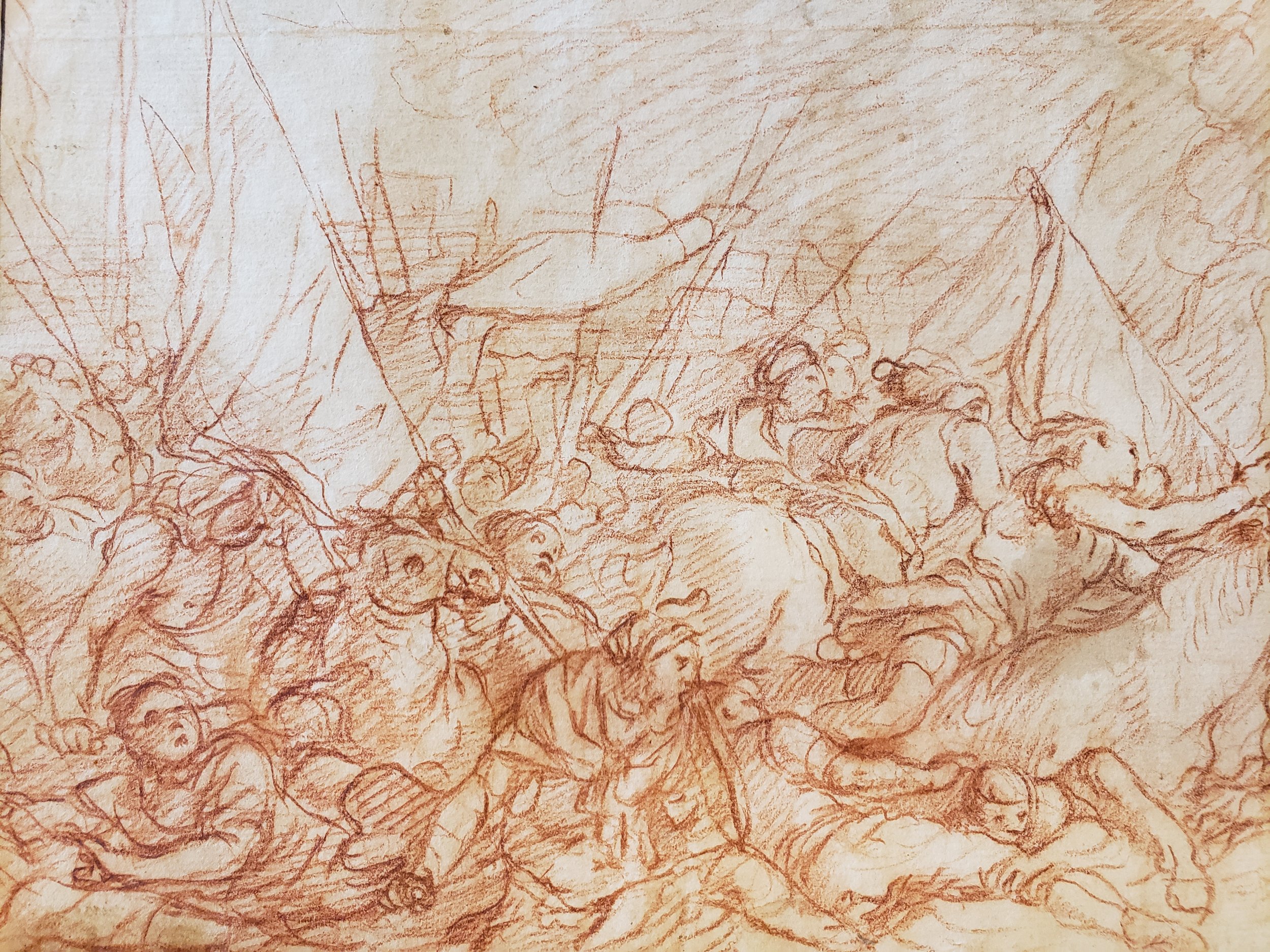Giulio Carpioni
Venice 1613 - 1678 Verona



Pharaoh’s Army Drowning in the Red Sea
Red chalk
Collection B. Wolff (L. 420)
7.25 x 12.3 inches (188.15 x 312.67 mm).
Giulio Carpioni was born in 1613, probably in Venice. He began his training as a painter in the workshop of Alessandro Varotari, known as Il Padovanio, through whom he was inspired to study the work of Venetian master, Titian. Carpioni developed an original and recognizable style that assimilated influences from the Caravaggesque Venetian works of Saraceni and Jean Leclerc and the group of Veronese painters active in Rome that included Turchi, Ottino, and Basetti. In 1638 he settled in Vicenza and executed most of his work there.
Carpioni is known for his paintings depicting historical and mythological themes, including bacchanals, and sacred subjects of a small size, many of which are to be seen in Venetian churches. The Italian writer and art historian, Pellegrino Antonio Orlandi described Carpioni’s small scale etchings as 'perfect conceptions, such as dreams, sacrifices, bacchanals, triumphs, dances of putti, the most attractive caprices and fantasies that a painter, inclined to work on a small scale, has ever conceived.'[1]
Our drawing depicts a pivotal moment in Exodus as the Pharaoh instructs his army to recapture the slaves he set free. Upon reaching the Red Sea, Moses, at God's command, causes the waters to part so that the Israelites can pass safely across. When Pharaoh and his troops try to follow, the water returns enveloping the horses, soldiers, and battle flags. Moses, Aaron, and the Israelites watch this intervention from the safety of the other side. Stylistically, our can be favorably compared to other red chalk drawings by Carpioni, including one housed at the British Museum (see fig.).
[1] (P.A. Orlandi, Abecedario pittorico, Bologna, 1704, p. 311).